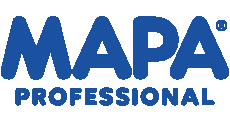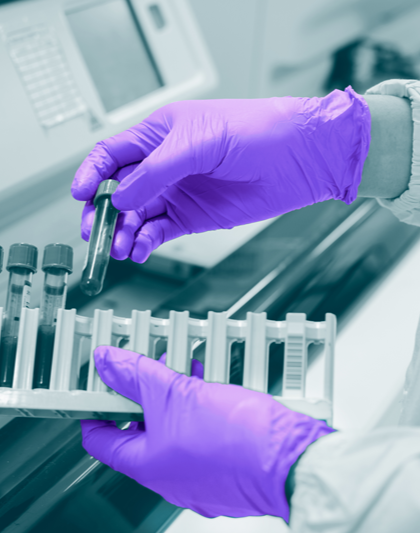Single Use /
Disposable Gloves
Single use gloves, also known as disposable gloves, are usually thinner than reusable gloves, and will provide the wearer with good tactile function and great dexterity.
It is Personal Protective Equipment category certified, and as such distinguishes the type of applications that are suitable for respective gloves.

Consider your Environment
Our disposable gloves are available in range of materials, with each material having specific properties which make them more suitable to certain working environments and users. For example vinyl gloves are often used in food production, whilst also being suitable for users with latex allergies. Where as Nitrile gloves are preferable for handling solvents and chemicals.
Did you know…
0
Billion Gloves
There were 15,502,484,376 gloves issued by Government Agencies in the UK, between the 25th Feb 2020 to 30th Sep 2022.
0
Million Cases of Contact Dermatitis
Across all industries, the estimated number of cases of contact dermatitis is 105,600,000 between 2010 and 2019.
0
Million Cases of Contact Dermatitis for Nurses
In 2010 – 2019, there were 13 millions cases of contact dermatitis across the nursing profession.
Source: HSE
Standards & Markings
EN ISO 374 is the main safety standard that applies to work gloves that protect against chemicals and micro-organisms. It consists of an array of standards, which has been updated on various occasions in recent years.
The main two standards for determining the chemical resistance of a glove’s material are:
EN ISO 374-1:2016+A1:2018 Protective gloves against chemicals and EN ISO 374-4: 2019 degradation testing of gloves. Chemical resistant gloves that have been certified to these standards have been tested for their resistance to permeation and degradation by specific hazardous chemicals.
The standard EN ISO 374-5: 2016 – Protective gloves against micro-organisms
The standard for gloves that protect against bacteria, fungi and viruses is tested to EN ISO 374-5: 2016.
Gloves must pass the penetration resistance test in accordance with standard EN 374-2:2014 – Determination of resistance to penetration. The possibility of claiming protection against viruses was added, if the glove passes ISO 16604: 2004 (method B) test.

Type C gloves are based on performance in tests against permeation by a certain number of chemicals.
Permeation is the process by which a chemical move through a glove’s material on a molecular level. In relation to Single Use gloves this would in most instances be: Nitrile, Latex or Vinyl. The permeation test measures breakthrough time (the time it takes for the chemical to move through the layers of the glove material).
Degradation is the change in the physical characteristics of a glove caused by contact with a chemical. Signs of degradation can include colour change, disintegration, flaking, hardening or swelling impacting the gloves protection levels.
Classification type |
Minimum performance level required to pass the test |
Minimum no. of chemicals against which protection is provided |
| Type A | 2 (min. 30 minutes to breakthrough) | 6 |
| Type B | 2 (min. 30 minutes to breakthrough) | 3 |
| Type C | 1 (min. 10 minutes to breakthrough) | 1 |
There are six performance levels:
Performance
|
Minimum
|
| 1 | > 10 minutes |
| 2 | > 30 minutes |
| 3 | > 60 minutes |
| 4 | > 120 minutes |
| 5 | > 240 minutes |
| 6 | > 480 minutes |
Under EN ISO 374-1: 2016, three samples from the palm of the glove (and, for gloves that are 400mm or longer, three samples from the cuff as well as the palm samples) are tested for permeation and degradation by a certain, minimum, number of chemicals from the following list of 18 substances:
Chemical |
Typically used in/for |
Code letter |
| Methanol | Paint manufacturing; fuel-cell manufacturing; organic chemical production; wastewater and sewage treatment; food and beverage processing; anti-freeze and de-icing products | A |
| Acetone | Organic chemical production; chemicals transport; paint and varnish manufacturing; pharmaceuticals manufacturing; beauty treatments | B |
| Acetonitrile | Pharmaceutical manufacturing; photographic film production; refineries; battery manufacturing | C |
| Dichloromethane | Chemical processing; food and beverage processing; garment printing; civil engineering; welding plastics | D |
| Carbon disulphide | Synthetic-fibre manufacturing; cellophane-film production; fruit and cereals production (for fumigation/as an insecticide) | E |
| Toluene | Fuels production (as an octane booster); a common solvent used in e.g. paint, paint thinners, adhesives and lacquers | F |
| Diethylamine | Corrosion inhibitor; as a (non-pesticide) agricultural chemical for crops; in flotation agents | G |
| Tetrahydrofuran | Solvent used in synthetic-fibre manufacturing | H |
| Ethyl acetate | Solvent used in food and beverage industry (to decaffeinate tea leaves and coffee beans; wine production); beauty products (perfume) and treatments | I |
| n-Heptane | A key component of petrol; solvent; paint and coatings manufacturing | J |
| Sodium hydroxide 40% | (also known as lye or caustic soda) Pulp and paper manufacturing; textile manufacturing; soaps and detergents; cleaning products | K |
| Sulphuric acid 96% | Fertiliser manufacturing; oil refining; wastewater processing; chemical synthesis; cleaning agent | L |
| Nitric acid 65% | Fertiliser production; explosives manufacturing | M |
| Acetic acid 99% | Textile printing; dye manufacturing; pharmaceuticals production; pesticides; cleaning agent | N |
| Ammonium hydroxide 25% | Adhesives; animal feed; cleaning and detergent products | O |
| Hydrogen peroxide 30% | Oxidiser; bleaching agent; disinfectant | P |
| Hydrofluoric acid 60% | Chemicals and pharmaceuticals manufacturing; used to etch glass and ‘wafers’ in the semiconductor industry | S |
| Formaldehyde | Industrial resin and coatings production; textiles processing | T |
The results of the degradation test must appear in the information leaflet.
A hole or holes in Single Use / Disposable gloves can spell disaster for medical staff who routinely wear gloves to conduct examinations in a Medical or Healthcare environment.
A hole in a medical glove worn by a medical practitioner can expose them and their patients to such hazardous substances as micro-organisms and bodily fluids. That’s why it’s imperative that doctors, nurses and other medical professionals are provided with work gloves that help protect themselves and keep their patients safe from cross-contamination.
The standard governing medical gloves for single use is EN 455. This standard consists of four parts including requirements and test methods for surgical and examination nitrile, latex and vinyl gloves.
Testing for freedom from holes under EN 455
EN 455 Part 1 (EN 455-1) of the standard covers the requirements and testing for freedom from holes. In a standard water-leak test a sample glove is filled with a litre of water to test for pinprick holes. To pass the test, the sample glove must achieve an Acceptable Quality Limit, or AQL, of a minimum of 1.5. If you think of this as a percentage, it would mean that less than 1.5% of gloves in a production batch may have defects ie pinholes. The lower the AQL level, the fewer pinholes were found in the sample tested. Lyreco’s range features Single Use / Disposable gloves that have an AQL of 1.5 and some offering an ultra-low level of 0.65 that means they exceed the requirements for pinholes in examination gloves.
Testing for physical properties
EN 455 Part 2 (EN 455-2) covers the requirements and testing for the dimensions of the gloves and for the force required to break through the glove material. Examination gloves must have a minimum median length of 240 mm and must not tear too easily. A particular challenge with medical gloves, which by necessity are very thin in order to ensure comfort, dexterity and tactility for the wearer. This is why they are tested for force at break (the point at which the material fails while being stretched) on a specialised machine.
For examination gloves made of rubber, such as latex gloves and nitrile gloves, the minimum force required to break the material is 6.0 Newtons.
For vinyl gloves, it is 3.6 Newtons.
Testing for biological contamination
EN 455 Part 3 (EN 455-3) covers the requirements and testing for biological contamination, which can affect the glove wearer or be transferred to patients. This can be caused by:
- Latex proteins – Proteins that are present in natural rubber latex and capable of causing a severe allergic reaction in sensitive people.
- Chemical residues – which are left over from the glove manufacturing process.
Testing for powder residue in gloves that are claimed by the manufacturer to be powder-free are also carried out under this part of the standard. Once manufactured powdered gloves will often have Corn Starch added to them, which eases the donning process (putting the glove on). However, if worn for a long time, the powder can stick to the wearer’s skin when the hand gets warm inside the glove, and this can cause irritation especially when in contact with any cracks or abrasions to the wearers skin.
In order to be classed as powder-free, a medical glove must not have a powder level in excess of 2 mg per glove.
Testing for shelf life
EN 455 Part 4 (EN 455-4) covers the requirements and testing for determining the shelf life of medical gloves for single use. For this part of the standard a series of tests are carried out to determine how long a glove can be stored before it becomes unfit for use. The maximum shelf-life that can be claimed for medical gloves is five years from the date of manufactured.
Simply put, EN 1186 is the European standard that needs to be passed for a glove, or any other piece of equipment, to be able to safely encounter food. This regulation must be met for all plastic materials including gloves, food packaging materials, storage containers and utensils. EN 1186 is in place to govern which materials can be used in gloves as well to limit the release of tiny amounts of plastics that may be harmful to humans into food, with two main limits that must be achieved:
Overall migration limit (OML): The maximum amount of non-volatile substances that can be released into food.
Specific migration limit (SML): The maximum amount of metal that can be released into food.
Acceptable migration levels are extremely small. For example, only 0.6mg of manganese per kilogram of food or food stimulant is permitted. OML levels are measured in surface area, and no glove can transfer over 10mg of material per square decimeter of food contact surface.
Gloves that are certified under EN 1149:2008 have electrostatic dissipative properties. These gloves should be worn during applications that carry the risk of sudden discharges of electrostatic energy and involve inflammable substances, such as gas or oil.
The EN1149 standard is separated down into four parts as shown below:
- EN 1149-1 – Test methods for the measurement of surface resistance
- EN 1149-2 – Vertical resistance test
- EN 1149-3 – Test method for the measurement of charge decay
- EN 1149-5 – Performance requirements
Discover Single Use / Disposable Gloves
Explore Single Use / Disposable Gloves from Lyreco, supplied by some of the biggest brands across PPE & safety.
You’ll find a range of products marked as sustainable via our Sustainable Selection methodology. The selection methodology is assessed by SGS and based on 3 criteria – People at Work, Planet, and Community by Lyreco. By shopping these products, you’re making a more socially & ecologically responsible safety procurement option.
Our Safety Brands








Specialist Disposable Gloves
Lyreco has a range of Specialist Nitrile Single Use Gloves for every need – Whether heavy duty with increased grip for the automotive industry or tested for use against chemotherapy drugs or even required to be accelerator free.
The different gloves in our specialist range carry features such as being silicone free or featuring a diamond textured grip pattern or with an ultra low pin hole AQL of 0.65 or containing no zinc, sulphur or accelerators. To find out more about this range please speak to your Lyreco Intersafe Business Development Manager.

Latex Coated Disposable Gloves
Single Use Latex gloves are manufactured using natural rubber latex. Disposable latex gloves are often used for medical examination and surgical environments, with the latex filtered and mixed with selected chemical ingredients which enhances durability, elasticity and strength.
This process also creates a resistance to damage from ozone and other ageing effects.

Vinyl Coated Disposable Gloves
Single Use Vinyl gloves are best suited to short-term, low-risk tasks, and therefore they should only be used if you are handling non-hazardous material.
They are often a lower unit cost option when compared to Latex or Nitrile disposable gloves – which is why Single Use Vinyl gloves are a popular choice in some food industry applications, as well as cleaning or domestic care businesses.
Single Use Vinyl gloves also have a loose and comfortable fit, making them relatively easy to put on. Single Use Vinyl gloves, for some applications, may also be suited to wearers who are concerned about latex allergies.






